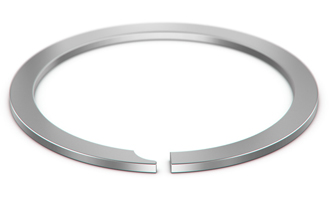Ask the Expert - Retaining Ring Gaps and Performance in High RPM Applications
Welcome back to the Ask the Expert Blog. This week, our experts answer some questions about retaining ring gaps and improving the performance of a retaining ring in a high RPM application.
How do Smalley engineers determine the size of retaining ring gaps? What happens if a retaining ring is compressed such that the free ends touch?

Retaining ring gaps are calculated and based on the application dimensions, installation/removal methods and our manufacturing capabilities. Smalley standard rings are designed such that the gap ends do not touch during installation. If the ring ends touch when compressed, it could jam and possibly deform or damage the ring and/or assembly. Consult Smalley engineering to review your application and installation requirements.
What can Smalley do to improve performance in high RPM applications?
The rotational capacity is a function of several parameters, including thickness, radial wall, cling (interference fit of the ring as it’s installed in / on the groove), diameter, etc. Quite often, the rotational capacity can be increased by increasing the radial wall dimension and / or the amount of cling in the groove. If after investigating this, the rotational capacity is still not sufficient, then we can add a self-locking feature to the ring. The self-locking feature consists of a tab and a slot so that when the ring expands due to centrifugal force, it is restricted by the tab contacting the edge of the slot. For more information, visit our rotational capacity page.
That is all for this week, check back for more Q & A as well as other exciting Smalley news!
Do you have a question for Smalley's Expert?



Connect With Us